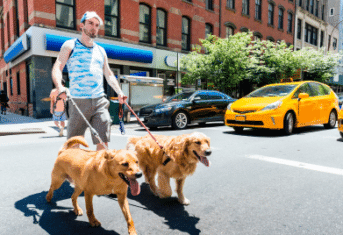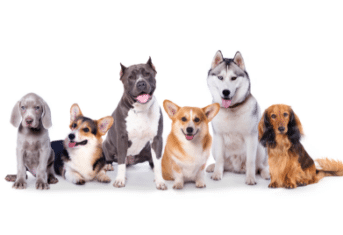Can We Talk…About Endoscopy? What Joan Rivers’ Death Teaches Us About Pet Healthcare

Can We Talk…About Endoscopy? What Joan Rivers’ Death Teaches Us About Pet Healthcare
Joan Rivers’ tragic death last week dominated social media and made many ask questions about the safety of endoscopy, pet owners included. Joan Rivers was an unabashed dog lover. And so using one of her signature lines, “Can we talk?” this blog talks about veterinary endoscopy and how veterinarians at The Animal Medical Center safely and successfully use endoscopy every day to diagnose and treat a variety of conditions.
What is Endoscopy?
Endoscopy is a compound word created from endo, which is Greek for within, and the common suffix -scopy or -scope found on many English words: telescope, periscope and microscopy. Once again, scope comes from the Greek word ‘skopein,’ meaning to look. The word endoscopy is generic and describes multiple medical procedures, including esophagoscopy, gastroscopy, laparoscopy (WARNING: This video was taken during an actual laparoscopy where a liver biopsy was performed. Weak-kneed readers should not view this video) colonoscopy, cystoscopy, nasopharyngoscopy, and bronchoscopy. What these procedures all have in common is the use of a piece of medical equipment containing a tiny lens or video camera and specially designed minimally invasive equipment to look inside the body and correct problems with few to no surgical incisions.
What is an Endoscope?
An endoscope appears to be a simple, long tube, but it is actually a very high tech device. The endoscope requires a light source to illuminate the inside of the body. The light source is very powerful since the tip inside the patient can be two to three feet away from the scope’s other end. Endoscopes can be flexible for snaking down the twists and turns of the airways or intestines, or it can be a rigid stainless steel tube. Flexible endoscopes use fiberoptics for transmitting the internal images along the length of the scope to a video monitor for the entire medical team to view. Rigid scopes use a series of lenses and the image is viewed through an eyepiece or on a monitor. Biopsy forceps, scissors and grabbers thread down the endoscope via a separate channel to facilitate biopsy and retrieval of accidentally ingested objects or bladder stones.
Why is Anesthesia Required?
Because of the nature of our patients, anesthesia is a necessity for any endoscopic procedure in a veterinary patient. Your dog or cat must hold perfectly still to allow precise placement of the endoscopic device. Because endoscopy equipment facilitates collection of biopsy samples, general anesthesia manages any pain associated with the procedure. Bronchoscopy, esophagoscopy and gastroscopy require the endoscope to be threaded though the mouth into the lungs, esophagus or stomach. Think what your pet’s chompers do to their favorite toy. Imagine what those same chompers could do to our delicate fiberoptic endoscope. Anesthesia is a must; however many precautions are taken before and during anesthesia by your pet’s medical team to ensure a safe endoscopic procedure.
Why Would My Pet Need Endoscopy?
AMC veterinarians use endoscopy every day to diagnose and treat patients. Our internal medicine team biopsies the nose, stomach, small intestine and colon endoscopically. Ditto for the retrieval of accidently swallowed bones, balls and socks. Orthopedic surgeons use arthroscopsy to identify and repair torn cartilage inside joints. Surgeons avoid putting your pet through major surgery by using laparoscopic and thorascopic procedures in treating diseases of the abdomen and chest. Our interventional radiology team can correct misplaced ureters and remove bladder stones via minimally invasive cystoscopy.
Anytime you hear someone say your favorite fur baby has a medical problem and needs a procedure, I know your heart flutters for a moment. Now that you know more about these diverse and life saving types of endoscopy, I’m sure you realize your veterinarian has ordered a sophisticated and medically advanced procedure for your pet.

































